Paskha [EN]
I would like to share what I have made for Easter. I'm too proud of it to keep it for myself :)
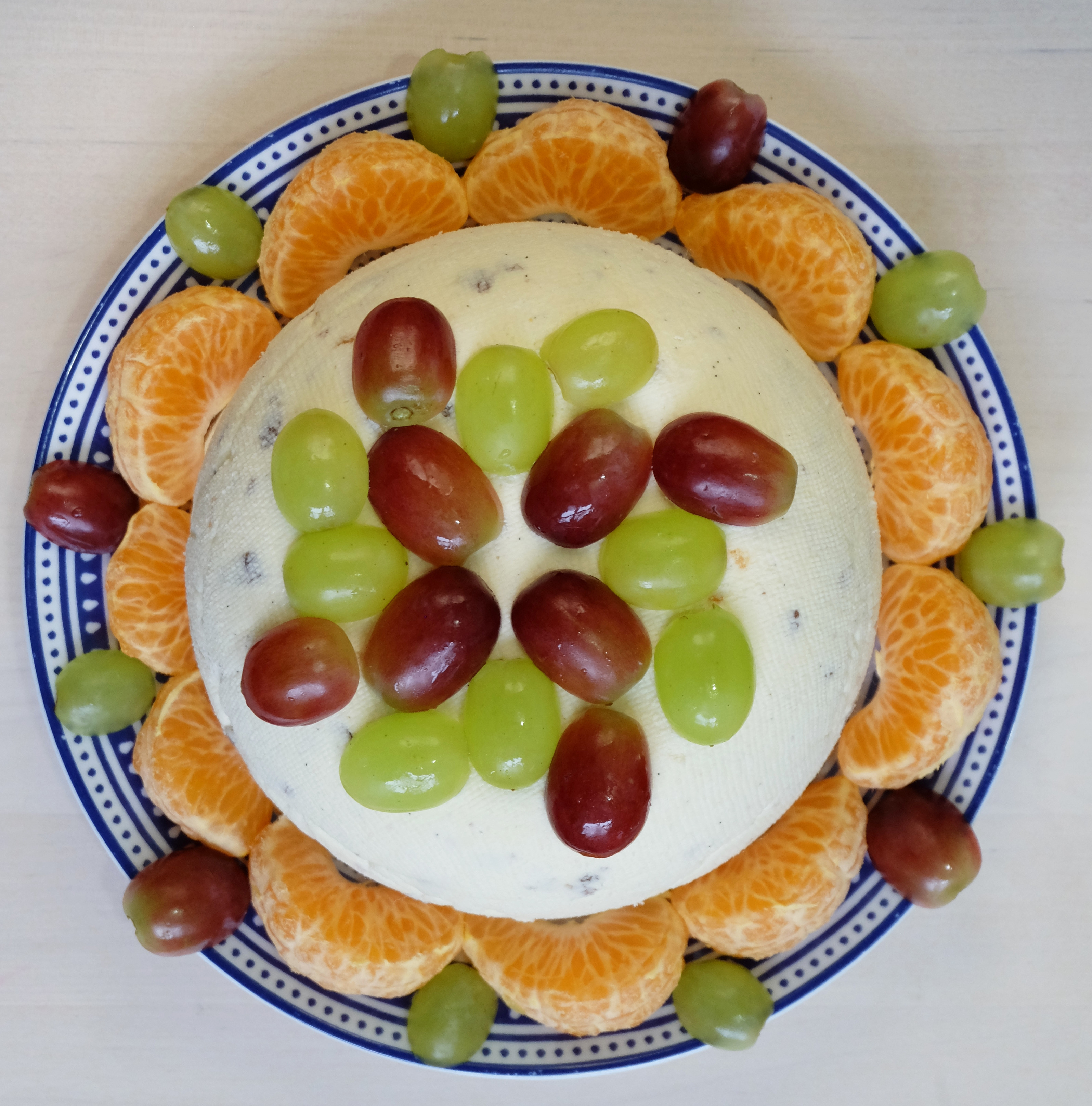
I have made dzionie (a traditional dish from my Mom's home village), we've made a couple cakes, some twenty loaves of bread, hot cross buns and meats. But first of all, I have made paskha (click to see a Wikipedia article).
A year ago I spent some time looking at how my Mom made it and took a photograph of the recipe. I knew I would be taking up the challenge this year, after all, I had to learn something new. Dzionie is quite an achievement, and this year it came out almost perfect, but even though I am the only one in my generation to make it, it has become a bit of a standard now. And Paskha - I've never made anything cheeselike in my life. Bring it on!
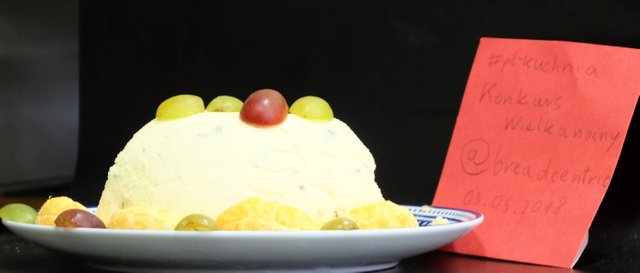
Planning
On the first day you prepare the curds, on the second - the final mixture.
You will need a big pot, a strainer, at least two half-square-meter gauzes (if you want to use more bowls, you can cut it and use some pieces I used a double layer for straining the curds and same in the bowl, but maybe a single layer would be enough), bowls for cooling. You will also need some room in your fridge for cooling.
Ingredients
This was enough for two portions. We ate the smaller one at home and the bigger went to our friends for the Easter Mondey party.
The curd:
- 2 l whole milk
- two vanilla pods - you can also use 16 g of vanilla sugar in the next phase, or two teaspoons of a vanilla paste, or two-three teaspoons of a vanilla extract; vanilla is expensive, but I like using it this way from time to time
- 0,5 l sour cream
- 6 eggs
The final mixture:
- 250 g butter
- 250 g icing sugar (next year I'm using 200 g, and if it's still too much, maybe I will go down to 150 g the year after)
- vanilla if you gave none in the curd
- all curd from the previous phase
- 50 g orange candid peel - I made it myself and it was so aromatic that 25 g were well enough
- 100 g chopped raisins - some are adding nuts, but I don't like nuts in sweets too much; Magda Gessler, Polish cook and restaurant owner, recommends leaving the raisins in wine or rum overnight - if you forget to do it, you can have the remaining wine/rum with the final paskha
- 150 g double cream - well, 50.5% fat might be a bit too much, maybe a single cream would be enough (if it can be whipped)
- mandarines, oranges or grapes for decorating
Preparation
- Start heating the milk in a pot. Use a small heat so that the milk doesn't burn, but gets heated to the boiling point
- Cut the pods along their length and scoop the seeds out. Throw it all into the milk
- Use a blender, a beater or a mixer to whisk the eggs with sour cream into a uniform liquid. I recommend steaming the eggs before use to make sure no salmonella gets through - you will be heating it all, but it's better to stay on the safe side
- When the milk begins to boil, pour the eggs with sour cream, mix thoroughly for about a minute, then leave it so that it begins to form curds. You will clearly see a solid thing separate from a murky liquid
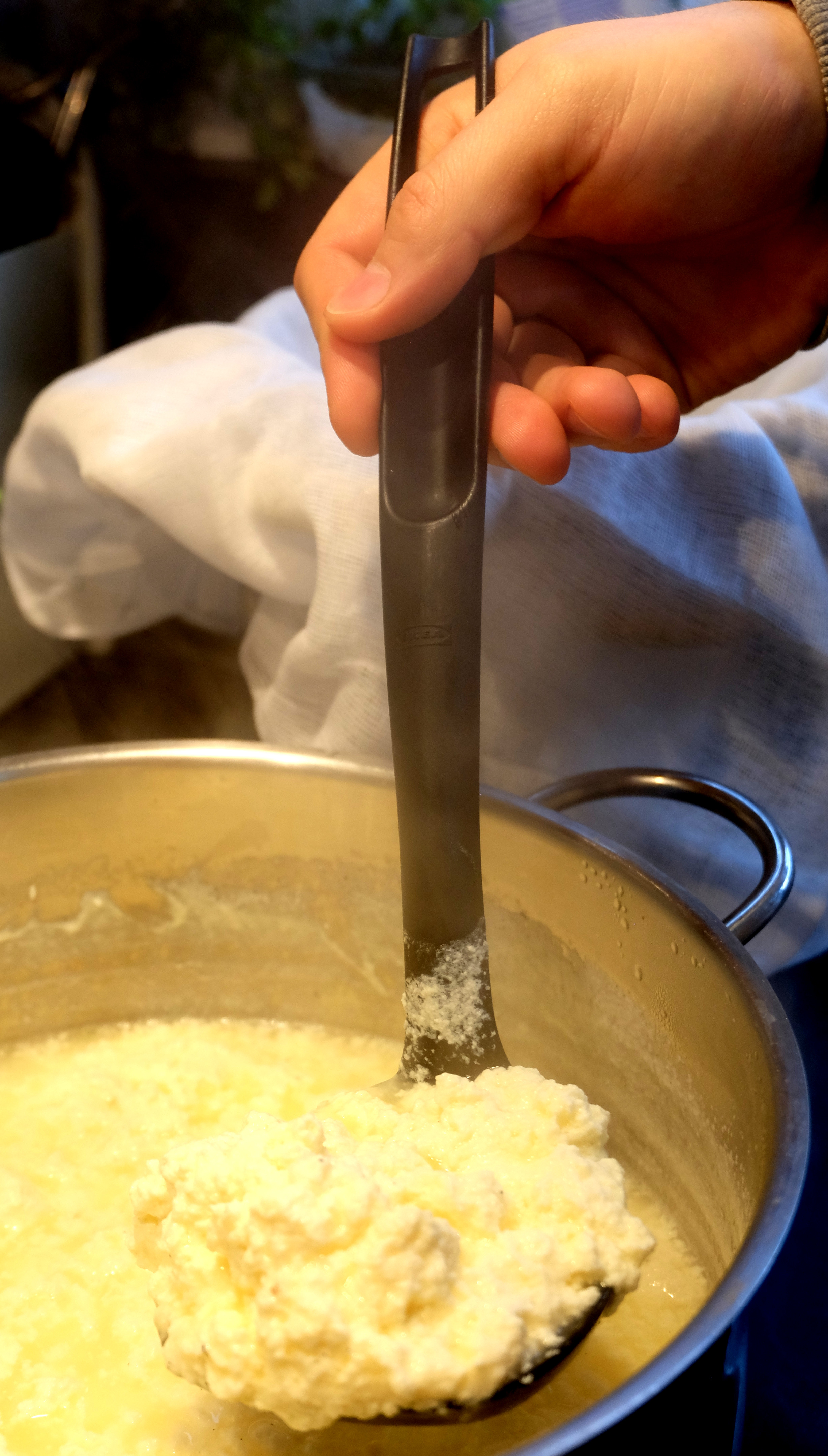
- When the curds form, mix it a bit, take off the heat and start transferring onto a strainer lined with a gauze to get rid of the liquid and have the curd remaining. You can leave it like that for the next day
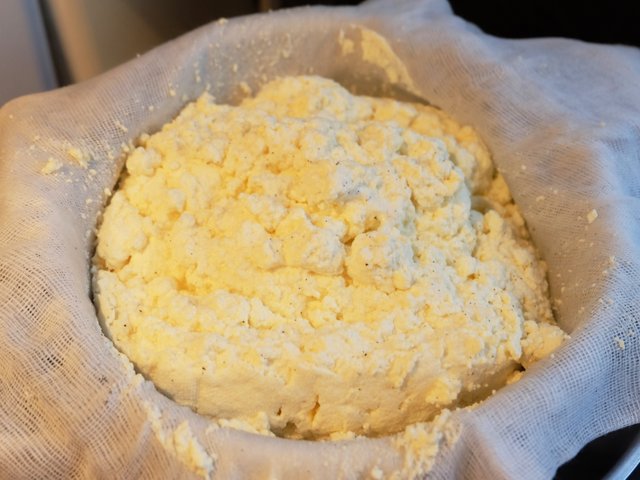
- Next day start with beating the soft butter with sifted icing sugar. Gradually start adding the yesterdays curd, chopped raisins and the orange peel. The mixture will be quite soft and fluffy. Put it aside
- Whip the cream. The advantage of doing it without added sugar is that if you kid distracts you, you'll get a delicious butter, just make sure you have a spare whipping cream
- Add first spoon of the whipped cream into the mixture and mix it thoroughly, then continue adding the rest of cream but mix delicately, so that the end result is even more fluffy
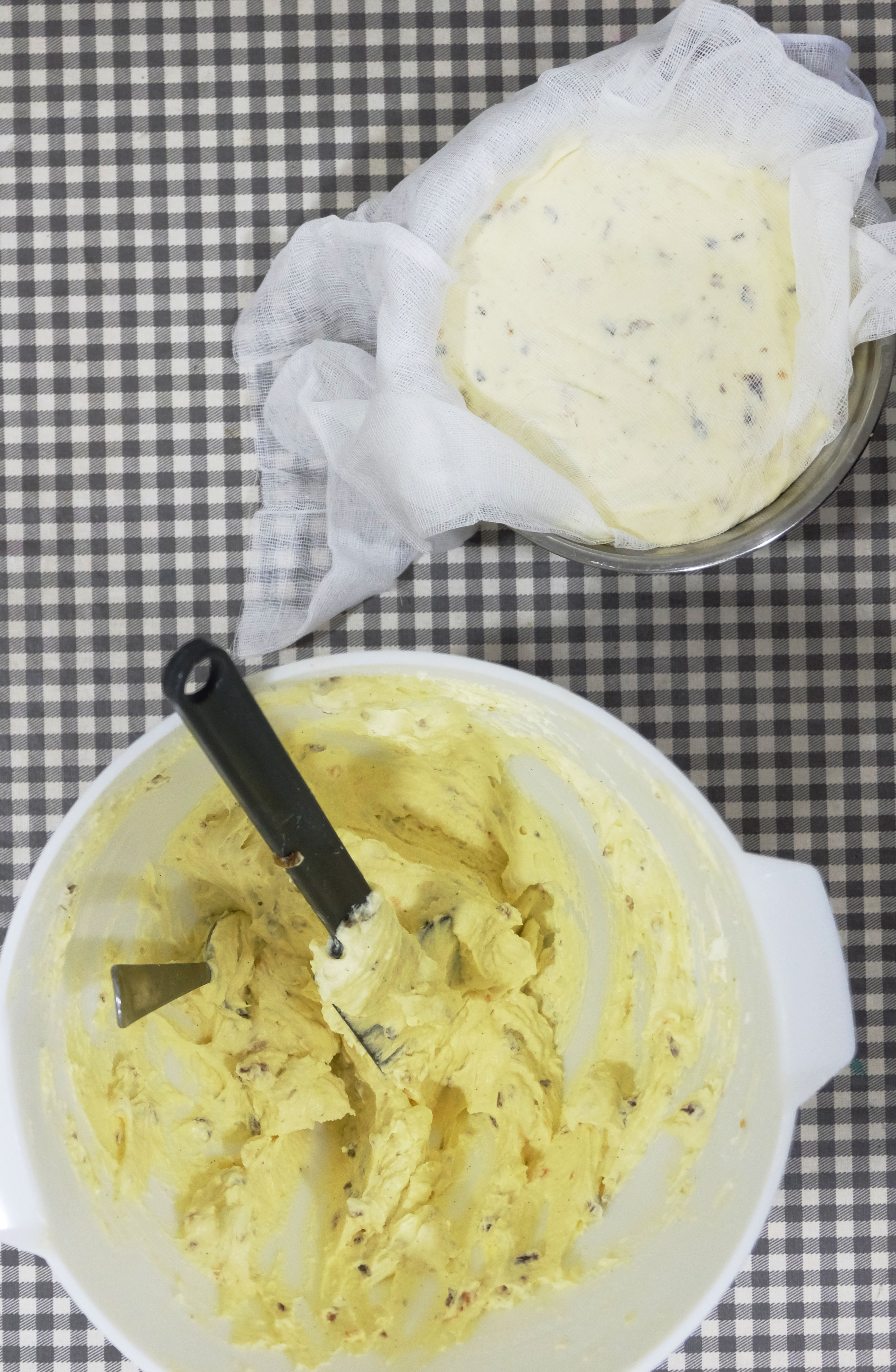
- Line the bowls with a gauze, then put the mixture into them and cover it with gauze as well. If you don't have a cover for the bowl, use cling film to cover it so that the paskha doesn't taste like everything else you have in your fridge. Refrigerate for a day or two so that it turns solid which should happen the following day
Voila! A perfect combination of cow protein, heart attack and diabetes. Serve with coffee and insulin.
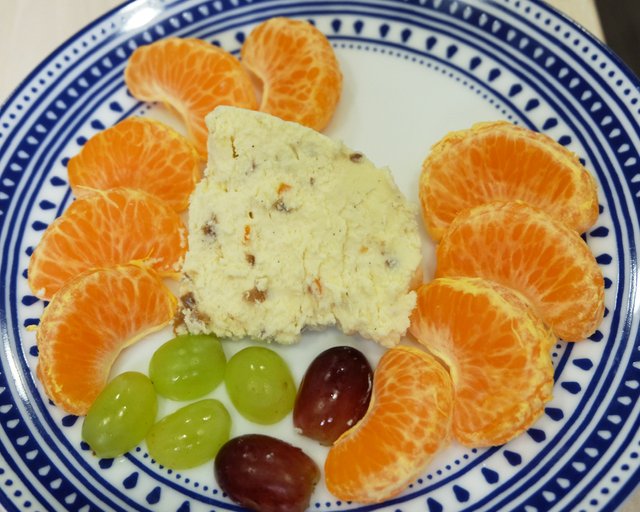
It is very rich and creamy. The colour is lightly yellow, the aromas of vanilla and citruses are easily recognisable. The desert is very filling. The addition of fruit on a plate gives it some refreshing balance. Delicious, I've done it!
Based on this experience I will attempt to make my own homogenised cheese which I love. It's not available in UK outside of the Polish stores and is a curd cheese blended with cream and some sugar/flavouring.
I hope your Easter was also successful :)
Thank you for your votes and interest. If you would like to see more posts about cooking, technology or parenting, feel free to follow me
Reply to my last post everytime you make a blog post and I will auto upvote and resteem it for free to my 36,000+ followers. @a-0-0
Oh wow this seems like such a laborious process! Can't imagine what it tastes like, so is the texture quite firm (cheese cake like?) once it's ready?
Kind of like cheesecake, but it slightly melts in the mouth a tiny bit like icecream but firmer.